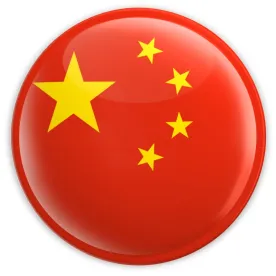China’s next wave of growth and investment will be driven by information technology, high-end equipment manufacturing, and biotechnology. These are among the nine sectors featured in the latest Strategic Emerging Industries (SEI) Key Products and Services Catalogue, released last month by China’s top economic policymaking body—the National Development and Reform Commission, or NDRC (full text in Chinese available here). NDRC formulated the latest SEI Catalogue together with the Ministries of Science and Technology, Industry and Information Technology, and Finance, as part of implementing China’s Thirteenth Five-Year Plan, which extends through 2020.
The latest SEI Catalogue must be read alongside its predecessor issued in February 2013 (full text in Chinese available here). In the latest iteration, “next generation information technology,” previously ranked second, now tops the list. This industry’s coverage is broad, spanning upstream to integrated circuits and downstream to network equipment and software. Newcomers include big data services, artificial intelligence, and cybersecurity products and services. The nod to cybersecurity is significant given China’s new Cybersecurity Law, set to take effect this June.
The deck has been reshuffled in other ways as well. Moving up in priority are “high-end equipment manufacturing” (with expanded attention to smart manufacturing), “new materials,” and “new-energy vehicles.” “Energy efficient and environmental technologies” fell from the top spot to the seventh, though these technologies should remain important in light of China’s ongoing war on pollution. Two entire sectors are wholesale additions to the latest SEI Catalogue. The first is “digital innovation.” This sector includes “digital cultural innovation” technology, software, and content; “new media services”; and industrial and environmental “design services.” While there could be a degree of overlap with the IT-related fields discussed above, the message seems to be that the government wants to promote the cultural and creative opportunities enabled by emerging forms of technology. Second, the new Catalogue includes “related services,” including research, standardization, and financial services. The spotlight on services underscores the government’s continued drive to shift the economy toward higher value-added sectors.
The latest SEI Catalogue will likely affect both inbound and outbound transactions. On the inbound side, potential foreign investors in these sectors should expect additional scrutiny from Chinese regulators, who could be keen to protect these sectors from foreign control and competition. Watch for an uptick in joint ventures and other alliances with Chinese companies and arrangements permitting strategic assets to remain in China or under the control of a Chinese company. On the outbound side, despite the Chinese government’s efforts to curb capital outflows, SEI-related M&A and other investment activities are real possibilities. The government may encourage Chinese companies in these sectors to acquire foreign companies and intellectual property, especially when such a move has commercial or political value.
Many questions about the SEI Catalogue’s interpretation and implementation remain open, and companies operating in China should watch developments closely. It is unclear, for instance, how the catalogue could affect government procurement and official incentives and support, particularly at the local levels. Indeed, in citing these and other concerns about the previous Catalogue, the U.S.-China Business Council recommended in 2013 that, over the long term, catalogues be eliminated altogether, contending that at best, they are ineffective and inconsistent with global best practices and, at worst, they encourage discriminatory preferences for Chinese ventures. For now, the central government seems to be pressing ahead, likely betting that the Catalogue will help align public and private sector action in the coming years.
China’s 9 Strategic Emerging Industries – 2016 Edition (Released Feb. 2017)
-
新一代信息技术产业 Next generation information technology (IT)
-
高端装备制造产业 High-end equipment manufacturing
-
新材料产业 New materials
-
生物产业 Biotechnology
-
新能源汽车产业 New-energy vehicles (NEVs)
-
新能源产业New energy
-
节能环保产业 Energy efficient and environmental technologies
-
数字创意产业 Digital innovation
-
相关服务业Related services





 />i
/>i

